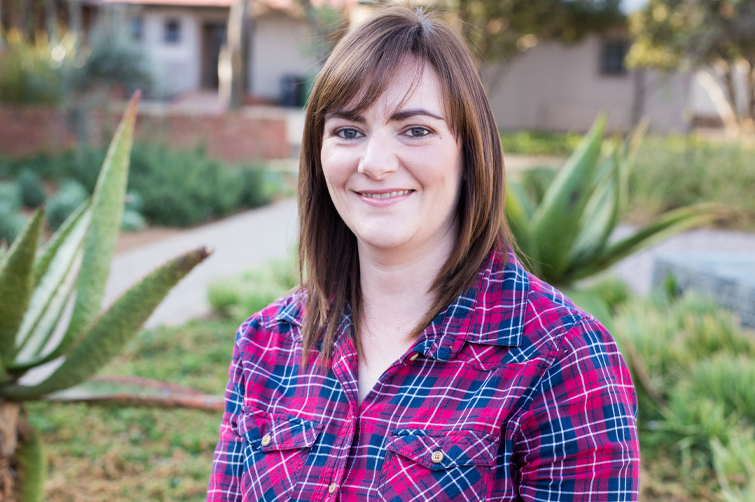Latest News Archive
Please select Category, Year, and then Month to display items
31 December 2019
|
Story Dr Cindé Greyling
|
Photo Anja Aucamp
 Dr Mariana Erasmus, SAENSE Platform Manager, says water remediation is vital for both the ecosystem and industries.
Dr Mariana Erasmus, SAENSE Platform Manager, says water remediation is vital for both the ecosystem and industries.
KovsieInnovation at the UFS supports innovative research outputs in various ways – one of which is to protect the intellectual property and to register patents where viable. This is in line with KovsieInnovation’s broader aim to create third-stream income for the university. Patent registration is a complex process and the UFS is proud to have the needed expertise to properly facilitate such an endeavour.
The SAENSE Platform
South Africa is a water-scarce country, with many water hungry industries (such as agriculture and mining). “Industrial processes often contaminate water with heavy metals, harmful chemicals, radioactive waste, and even organic sludge,” Dr Mariana Erasmus, SAENSE Platform Manager, explains.
Hence, water remediation is vital for both the ecosystem and industries. One of the key functions of the SAENSE Platform is to offer water-remedial solutions for the (bio)remediation of nitrates, heavy metals, and salts, among others. The platform’s activities and services are supported by undergraduate and postgraduate students and researchers, using Technology Innovation Agency (TIA) funding. TIA is a national public entity that serves as key institutional intervention to bridge the innovation chasm between research and development.
From waste to water
Through the joint effort of two mining companies and the UFS/TIA SAENSE Research Platform, a new treatment for mine drainage (MD) has been developed. This patented B-DAS (Barium – Dispersed Alkaline Substrate) technology effectively treats the major contaminants found in acid, alkaline, or neutral mining wastewater. The aim of the B-DAS system is to provide a passive water-treatment solution with minimum waste production; it can also be a potential pre-treatment for reverse osmosis (RO) to lower the requirements of the membranes and therefore potentially reduce the RO cost.
The success of the patent is that it turns unusable water into water that is fit for agricultural purposes at a reduced cost and increased efficiency.
How to interpret Centlec’s load shedding
2008-01-31
Everyone in South Africa is affected by power failures (load shedding). Centlec took certain measures to manage the situation. These measures are explained:
Time slots
See the following table for an indication of times when load shedding might be applied to specific areas: http://www.centlec.co.za/power_shed/PDF/time_slots.pdf
Groups
The city was divided into six groups. This document clearly indicates which area in the city resorts under which group: http://www.centlec.co.za/power_shed/PDF/groups.pdf
According to the document, the university resorts under group 4. In the table with time slots it is the grey area.
Stages
Eskom developed three stages for load shedding. (See stage table at the bottom of the page http://www.centlec.co.za/power_shed/PDF/time_slots.pdf)
- Stage 1: Less load shedding is applied in stage 1. E.g. the UFS resorts in group 4 and on a Monday, according to stage 1, the power will not be switched off during 12:00 and 14:30 (this time slot is not highlighted in orange).
- Stage 2: More load shedding is applied in stage 2. Load shedding will be applied during stage 2 between 12:00 and 14:30 on a Monday at the UFS.
- Stage 3: All time slots are highlighted in orange, which indicates that power will be switched off for the whole duration of stage 3.
Example
Today, Tuesday, load shedding was scheduled to take place from 10:00 to 12:00 at the UFS. Currently, according to Centlec’s web site, stage 1 is active. This time slot is not marked in stage 1, therefore load shedding is not applied. Centlec gives also additional information; “No load shedding in progress.”
Keep in mind that if an area is at risk it does not automatically imply that the power will be switched off. It all depends on the request from Eskom at that particular moment whether the actual shedding is required.